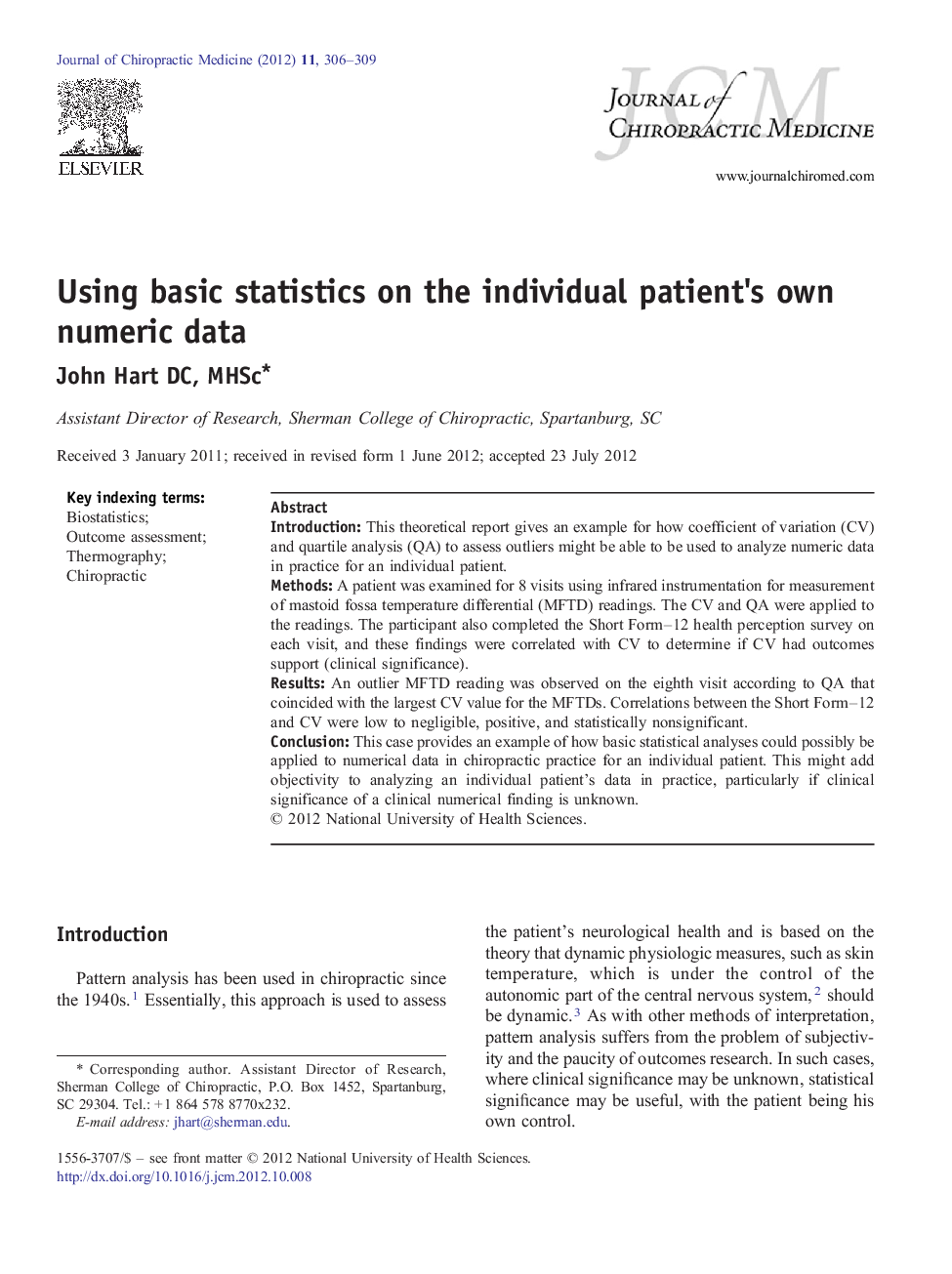| Article ID | Journal | Published Year | Pages | File Type |
|---|---|---|---|---|
| 2620088 | Journal of Chiropractic Medicine | 2012 | 4 Pages |
IntroductionThis theoretical report gives an example for how coefficient of variation (CV) and quartile analysis (QA) to assess outliers might be able to be used to analyze numeric data in practice for an individual patient.MethodsA patient was examined for 8 visits using infrared instrumentation for measurement of mastoid fossa temperature differential (MFTD) readings. The CV and QA were applied to the readings. The participant also completed the Short Form–12 health perception survey on each visit, and these findings were correlated with CV to determine if CV had outcomes support (clinical significance).ResultsAn outlier MFTD reading was observed on the eighth visit according to QA that coincided with the largest CV value for the MFTDs. Correlations between the Short Form–12 and CV were low to negligible, positive, and statistically nonsignificant.ConclusionThis case provides an example of how basic statistical analyses could possibly be applied to numerical data in chiropractic practice for an individual patient. This might add objectivity to analyzing an individual patient's data in practice, particularly if clinical significance of a clinical numerical finding is unknown.
